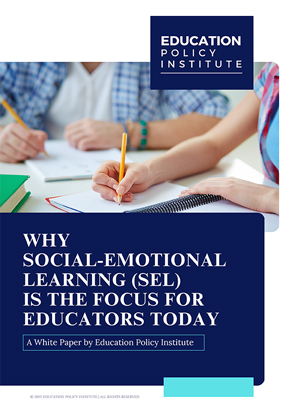In recent years, gamification has become a buzzword in education. It offers a fresh approach to engaging students and enhancing learning. This innovative concept involves applying game elements and principles to educational activities. Further making learning interactive, enjoyable, and effective.
The goal of gamification is simple yet profound. It helps to leverage the inherent human inclination towards play and competition to motivate students and improve their learning outcomes. By integrating elements like points, badges, and challenges into the learning process; educators create a more dynamic and engaging environment that caters to the diverse needs of students.
Gamification not only boosts academic performance but also nurtures essential skills like problem-solving and collaboration. It's a game-changer in education. It offers a new way to inspire students and transform traditional teaching methods.
So, let's dive in and explore how gamification impacts a student’s learning and engagement.
What is Gamification?
Gamification is a concept that brings elements of games into non-game contexts, such as education. It involves using game mechanics like points, badges, and leaderboards to motivate and engage students in learning.
The goal is to make learning more interactive, enjoyable, and effective by tapping into the natural human inclination towards play and competition. In education, gamification can enhance student engagement. It can improve learning outcomes and foster a more dynamic and immersive learning environment.
Examples of Gamification in Education
The primary focus of early childhood educators is to assist children in early language development, reading, and social skills. Additionally, they design lessons and create innovative activities to engage children. However, their role extends beyond mere fun and games as they:
- Duolingo: Duolingo gamifies language learning by offering bite-sized lessons, levelling up, and earning rewards. Students can track their progress, compete with friends, and unlock achievements. This makes the learning experience interactive and engaging.
- Kahoot: Kahoot transforms learning into a game with its interactive quizzes and challenges. Teachers can create custom games and students can participate using their devices. Kahoot encourages active participation, collaboration, and friendly competition in the classroom.
Understanding the Impact of Gamification
Theoretical Framework
Gamification is a rising trend in education. It leverages game elements to boost student engagement and learning. It is crucial to explore the theoretical foundations that underpin this innovative approach. Two key theories particularly relevant in this context are Self-Determination Theory and Flow Theory.
Self-Determination Theory
Self-Determination Theory was proposed by Edward L. Deci and Richard M. Ryan. It posits that humans are inherently motivated to grow and develop, and this motivation can be either intrinsic or extrinsic.
Intrinsic motivation stems from internal factors such as a sense of autonomy, competence, and relatedness. Extrinsic motivation, on the other hand, arises from external factors like rewards and punishments.
When applied to gamification, Self-Determination Theory suggests that by integrating elements that enhance intrinsic motivation, such as autonomy and competence, educators can effectively engage students in the learning process.
Flow Theory
Flow Theory was developed by Csikszentmihalyi. It describes a state of optimal experience where individuals are fully immersed and engaged in an activity. This state, known as "flow," occurs when the challenge level of an activity matches the individual's skill level.
In the context of gamification, Flow Theory suggests designing tasks and challenges that are appropriately challenging yet achievable. This way, educators can facilitate a state of flow in students, leading to increased motivation and engagement.
These theories form the foundation for understanding how gamification can enhance student motivation and engagement. By applying these principles, educators can create learning experiences that are engaging and promote meaningful outcomes.
How Does It Improve Student Learning Engagement?
Gamification enhances student learning engagement by using technology to tap into basic human instincts. The human brain is wired to seek challenges and dislikes leaving tasks unfinished. Thus, making games an ideal platform for learning. Through gamification, students are motivated to overcome challenges and achieve success, mirroring real-life scenarios where persistence leads to accomplishment.
Technology plays a crucial role in gamified learning. It provides a platform for engagement that aligns with how the human brain functions. Games amplify these instincts, encouraging active participation and a desire to succeed.
Rewards play a pivotal role in gamification. They serve to motivate students and solidify their sense of achievement. These rewards come in various forms:
- Badges signify specific accomplishments and milestones.
- Points offer access to items or privileges within the game or learning environment.
- Challenges provide incentives for students to strive for greater achievements.
- Leaderboards create a sense of competition and accomplishment as students' progress and compare their performance with others.
These elements work together to enhance engagement and encourage students to participate and excel in their learning endeavours actively.
Research by the University of Washington confirms that active engagement in the learning process increases students' attention and encourages higher-level critical thinking. When students actively participate in their learning, they are more likely to memorize and understand the material, as they are deeply involved in the process. This active engagement fosters a deeper understanding of the material, as students are encouraged to ask questions and think critically.
What is Its Role in Student Learning Engagement?
Gamification plays a crucial role in student engagement and learning by using game design principles and mechanics to make learning more interactive and enjoyable. It can enhance student engagement and motivation by incorporating elements such as levels, rewards, leaderboards, and competition.
Some ways in which student engagement can be enhanced are:
- Interactive Learning Experience: Gamification introduces game elements like levels, rewards, and leaderboards, making learning interactive and engaging.
- Motivation and Engagement: By incorporating challenges and competitions, gamified learning solutions motivate students to stay engaged and strive for improvement.
- Improved Learning Outcomes: Research shows that gamification can lead to improved performance, increased retention of information, and better problem-solving skills.
- Clear Goals and Objectives: Setting clear goals encourages students to achieve them and increases engagement in learning.
- Community Building: Promoting collaboration and competition fosters a sense of community among students, enhancing motivation.
- Instant Feedback: Providing immediate feedback on student progress encourages them to continue learning and improves engagement.
- Personalized Learning: Tailoring the learning experience to individual students ensures that each student is appropriately challenged and engaged.
Incorporating challenges and puzzles into the learning process can also make learning more challenging and engaging. Individual students can get tailored learning experiences through personalized feedback, challenges, and activities from educators. This can ensure that each student is appropriately challenged and engaged in their learning journey.
Benefits and Drawbacks of Gamification
Traditional teaching techniques have been revolutionized by the incorporation of gamification into education, which has attracted substantial attention. This creative method of bringing game components into instructional settings has taken up in the educational technology (edtech) industry. The gamification industry is estimated to be worth billions of dollars. It has the potential to completely transform the workplace.
Benefits of Gamification
Gamification offers several advantages for student learning and engagement:
- Increased Motivation: By introducing elements like challenges and rewards, gamification makes learning more enjoyable and encourages active participation.
- Enhanced Retention: The interactive nature of gamified learning helps students retain information better than traditional methods.
- Improved Learning Experience: Gamification creates a dynamic learning environment that keeps students engaged and focused on their learning goals.
- Diversified Learning Material: Gamification allows educators to present learning material in innovative ways. Further, catering to different learning styles.
- Promotion of Positive Behaviors: Through rewards and recognition, gamification encourages positive behaviours such as persistence and collaboration.
- Socialization: Gamified learning environments promote interaction and collaboration among students, fostering a sense of community.
Drawbacks of Gamification
Despite its benefits, gamification also has some drawbacks:
- Potential Distractions: The engaging nature of gamification can sometimes distract students from the main learning objectives.
- Limited Long-Term Impact: While gamification may increase short-term engagement, its long-term impact on student motivation and learning outcomes may be limited.
- Bias Risks: Gamification may favour certain students who are better at playing or prefer specific games.
- Relevance Challenges: Not all subjects or topics may be suitable for gamification, as creating game-like activities that accurately reflect the material can be challenging.
- Implementation Complexity: Implementing gamification in the classroom can be challenging for teachers, especially those unfamiliar with the technology or gaming concepts.
Gamification offers several benefits for student learning and engagement. They include increased motivation, personalized learning experiences, and a sense of accomplishment. However, educators must also be aware of the potential drawbacks. Such as over-reliance on extrinsic rewards and the potential for competition to create negative outcomes. By carefully considering these factors, educators can effectively integrate gamification into their teaching practices to enhance student learning and engagement.
Final Words
In conclusion, the impact of gamification on student learning and engagement is profound. It offers a fresh and innovative approach to education, making learning interactive, enjoyable, and effective. By incorporating game elements like challenges, rewards, and competition, gamification motivates students to actively participate in their education.
Despite its benefits, gamification also has some drawbacks, such as potential distractions and implementation challenges. However, by carefully considering these factors and implementing gamification in a thoughtful and strategic manner, educators can create a dynamic and engaging learning environment that fosters student success.
Overall, gamification has the potential to transform education and enhance student learning outcomes. It provides a platform for students to develop essential skills like problem-solving, collaboration, and critical thinking. As educators continue to explore and implement gamification in the classroom, it will be exciting to see how this innovative approach shapes the future of education.
Latest
Trends blogs
- Education and Industry Alignment: Rethinking Skill-Based Curriculum
- Education Policy Reform Amid Global Challenges and Shifting Standards
- Certification and Credentials: The New Fuel for Career Growth
- Technology in Outcome-Based Education: Driving Change in Higher Education





